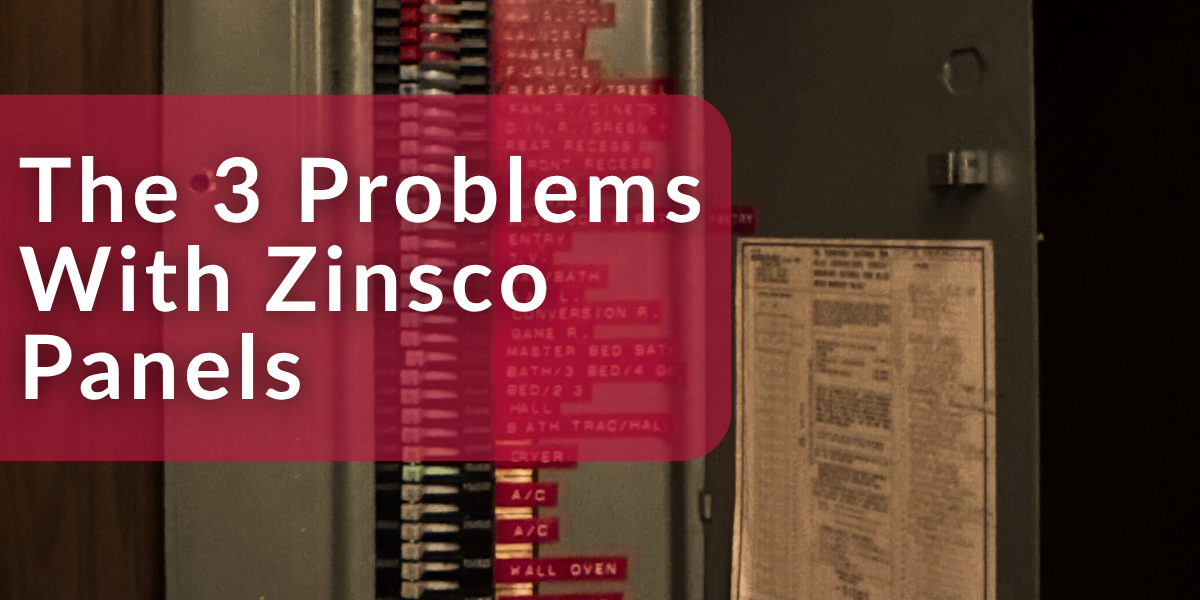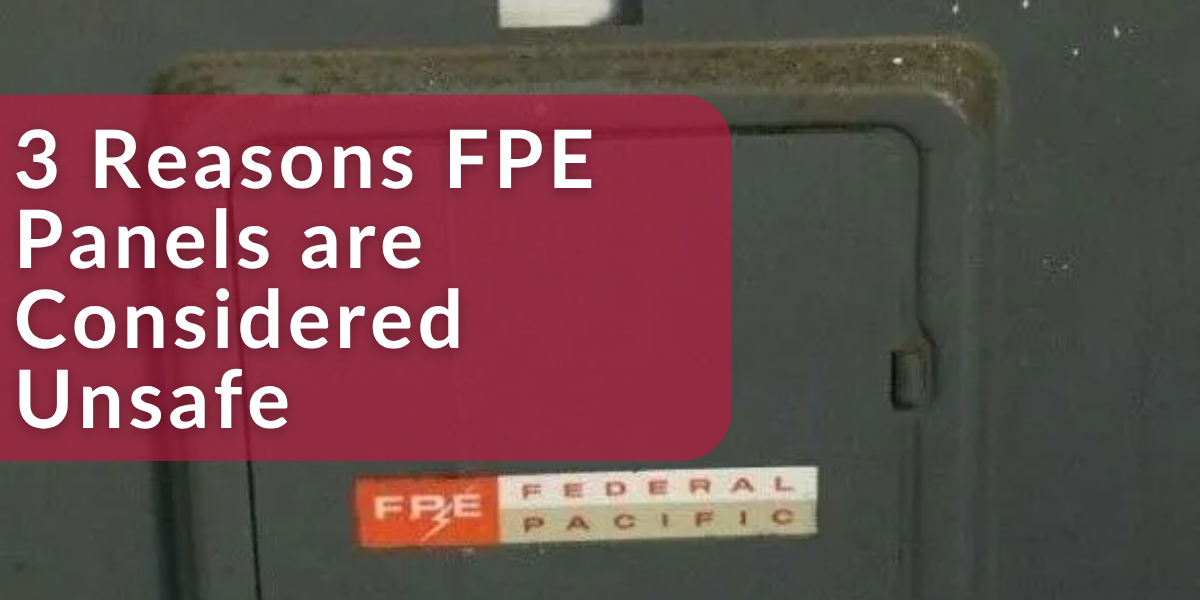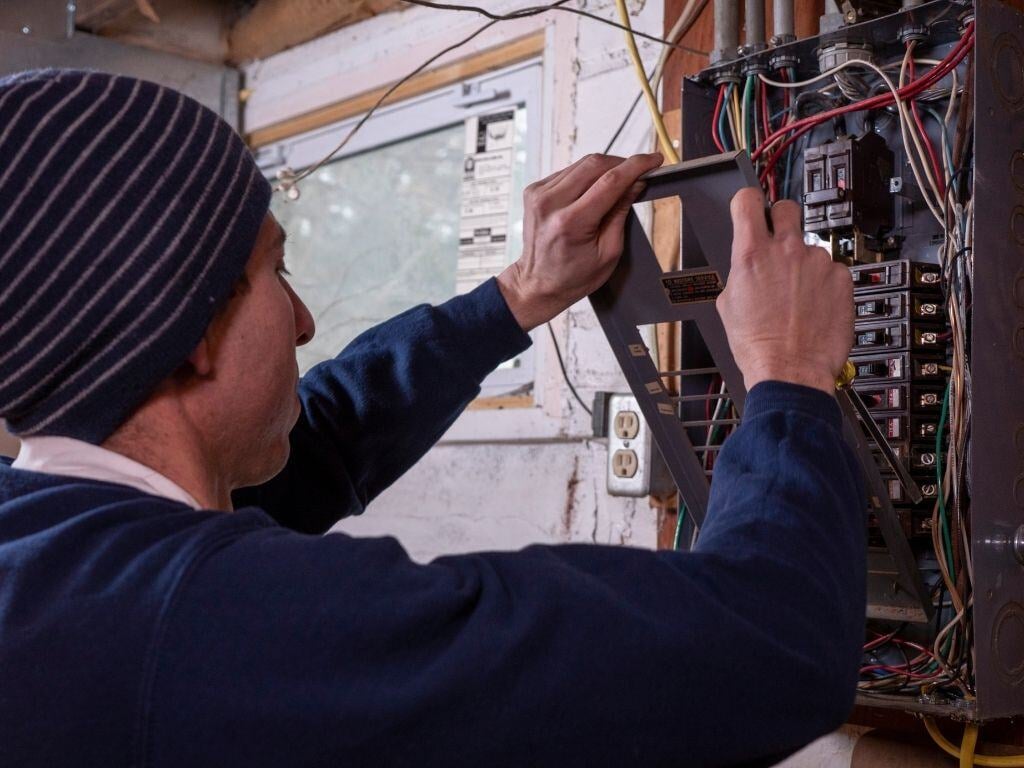What Is a Zinsco Panel? 3 Big Problems Every Homeowner Should Know
November 1st, 2025
5 min read

So your electrician told you that you have a Zinsco panel. At first, that might not sound like a big deal, it’s just a name printed on a metal box, right? But here’s why it matters: Zinsco panels have a long track record of failing to do the one job a breaker panel is supposed to do, shut off power during dangerous conditions. In some cases, the breakers can stop working on the inside while still looking “on” from the outside. That means your electrical system could be overheating without any warning, which is a serious fire risk.
At Integra Electrical, we work on older Iowa homes every day, and we’ve seen firsthand how Zinsco panels can quietly fail behind closed panel covers. Inspectors and electrical safety researchers have also documented these issues for decades. Between aging parts, outdated design, and hidden failures, Zinsco panels have earned a reputation as one of the most 5 problematic residential panels still found in homes today.
The 3 main problems with Zinsco panels are:
- Breakers that don’t always trip when they should
- Aluminum bus bars and loose connections that lead to hidden damage
- Outdated design and hard-to-find parts that make repairs risky and expensive
In the sections below, we’ll break each of these down in plain language and give you a clear picture of what to expect if your home has one of these panels.
What Is a Zinsco Panel?
Zinsco panels were a popular brand of electrical panel installed in homes throughout the 1950s, 60s, and 70s. If your home was built during that time, or even a little later if the panel was never updated, there’s a good chance you might still have one tucked away in a basement, utility room, or garage. They’ve stuck around in homes like that one avocado-green fridge that just won’t quit, only this one happens to run your entire house.
They were known for their distinctive slim breakers and colorful switch handles. At the time, they were a common and affordable choice, so they ended up in homes all over the country. Eventually, Zinsco was bought out by Sylvania, and production stopped in the early 1980s. But thousands of these panels are still in use today, quietly running in the background.
Thousands of these panels are still in use today, quietly running in the background. But while they may look like they’re holding up, most insurance companies see them as a red flag. In some cases, having a Zinsco panel can lead to higher premiums, stricter policy requirements, or even being denied coverage until the panel is replaced.
The Breakers Stop Working
Every breaker in your electrical panel has one job: to cut power when something goes wrong. If there’s a short circuit or too much current flowing through a wire, the breaker should “trip,” stopping the electricity before anything overheats or catches fire.
The issue with Zinsco panels is that their breakers are known to stop working without showing any signs of trouble. Over time, the type of aluminum used inside the panel can heat up, melt, and actually fuse the breakers to the metal bus bar. When that happens, the breaker can no longer trip, even if there’s a serious fault. From the outside, everything looks normal. On the inside, the system is quietly failing to protect your home.
This kind of hidden malfunction is what makes Zinsco panels so risky. You could flip a breaker thinking you’ve shut something off, but in reality, the circuit might still be live. And if there’s an overload, the panel may not respond at all.
Aluminum Bus Bars
Another major issue with Zinsco panels is the way the bus bars were made. The bus bars are the metal strips inside the panel that deliver electricity to each breaker. In Zinsco panels, these were made with aluminum, which doesn’t hold up well over time.
As aluminum ages, it can corrode, oxidize, and loosen where the breakers connect. When that happens, the electrical connection isn’t tight anymore, which causes arcing (tiny sparks between metal parts) and heat to build up. This usually happens behind the panel door, so everything looks fine from the outside while the inside slowly deteriorates.
The longer those loose or corroded connections sit, the worse the damage gets. We’ve seen bus bars that were burned, pitted, or even partially melted, all while the breakers on the front still looked perfectly normal.
This is one of the biggest reasons Zinsco panels are considered unsafe today. It’s not always about a sudden failure; sometimes the danger is quietly building inside the panel for years.
Outdated Design and Hard-to-Find Parts
Even if a Zinsco panel seems to be working, the design itself is outdated by today’s safety standards. These panels were built decades ago, long before modern protective features like AFCI and GFCI breakers became standard. They simply weren’t designed to handle the kind of electrical demands most homes have today, things like multiple appliances running at once, EV chargers, hot tubs, or finished basements with more circuits.
Another challenge is that Zinsco breakers are no longer made, and the original manufacturer shut down production in the early 1980s. Replacement breakers are difficult to find, and many of the ones that are available today are either refurbished or aftermarket versions. While there are Zinsco-compatible breakers on the market, they don’t address the core problems inside the panel, like the aging bus bars and weak connections, and they haven’t been proven to offer the same level of protection as a modern panel.
Because of that, patching or “piecemealing” a Zinsco panel often turns into throwing good money after bad. Even if you replace breakers, you’re still left with a panel that has an outdated design at its core. It’s like trying to keep a classic car running with parts from three different junkyards and a prayer. Sure, it might start, but don’t count on it for the highway.
Cost and Replacement: What to Expect
Replacing a Zinsco panel typically costs between $3000 and $15,000 for most Iowa homes. The exact price depends on your panel size (150 or 200 amps), whether any wiring or meter upgrades are needed, and local code or permit requirements.
What now?
While upgrading your panel isn’t exactly pocket change, it’s typically a once-in-a-lifetime improvement, the kind that makes your home safer, clears up potential insurance headaches, and prepares your electrical system for the way we live today. Think of it like replacing an old foundation: not glamorous, but absolutely essential if you want everything else to stay solid for years to come.
If you’re curious about what this kind of upgrade might mean for your home, you don’t have to guess. You can get a ballpark price in just a couple of minutes with our Panel Upgrade Calculator, no phone calls, no pressure, just clear information to help you plan confidently.
Zinsco Panel Frequently Asked Questions
How can I tell if I have a Zinsco panel?
Check the label inside your panel door. Names like Zinsco, Zinsco Magnetrip, Sylvania, Sylvania-Zinsco, or GTE Sylvania-Zinsco are all giveaways. These panels were common in homes built from the 1960s through the early 80s. If you’re not sure, an electrician can help you identify it so you’re not left in the dark about your electrical panel.
Can I just replace the breakers instead of the whole panel?
Your electrician can, but it’s kind of like putting new tires on a cracked car frame. Aftermarket breakers don’t fix the underlying issues with the bus bars and panel design. It might feel like a shortcut, but the real problems are still there.
Are Zinsco panels still “legal”?
Technically, yes. They’re grandfathered in, which means they were legal when installed. But “legal” isn’t the same thing as “safe.” Inspectors frequently flag Zinsco panels during home sales, and some insurance companies may require replacement to keep coverage.
Is replacing a Zinsco panel really worth it?
Yes. It’s usually a one-time upgrade that makes your home safer, brings it up to modern standards, and gives you peace of mind. Plus, it can prevent future headaches with insurance or inspections. Think of it as an investment in sleeping better at night.
Dyllan has over a year of experience in the electrical field and is passionate about helping his team and customers succeed. He’s motivated by seeing everyone grow and thrive together. Outside of work, he’s a husband and proud father of two who loves spending time with his kids. Dyllan enjoys serving homeowners and building meaningful connections through every interaction.
Topics:



.png?width=1200&height=600&name=ITEpanel%20(2).png)







